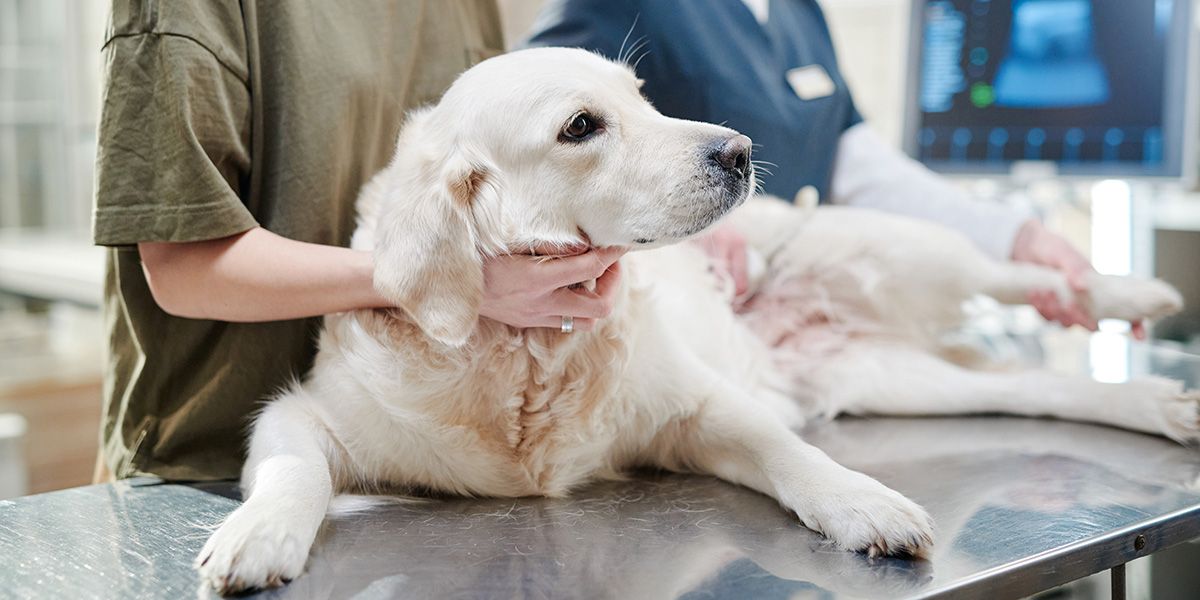Why Does My Dog Have a Lump on His Neck?
Few things cause more anxiety than petting your dog only to discover a bump beneath his fur. Scratching him beneath the collar, you find a strange bulge. Your mind begins racing as you wonder, “Why does my dog have a lump on his neck?”
As Tucson’s trusted veterinarian, we have a few theories that might answer your question. Call us at (520) 889-9023 to book an appointment and find solid answers.
Fatty Tumor
Like many concerned pet owners, your mind might immediately jump to cancer as the reason for a lump. While you need a veterinarian to verify, many lumps aren’t cancerous. Sometimes dogs can develop fatty tumors called lipomas.
Lipomas consist of fat cells that accumulate in one place. While they don’t threaten your dog’s health, we can surgically remove them to reduce irritation.
Sebaceous Cyst
A sebaceous cyst is another type of fatty tumor that poses no threat to your dog. Despite their name, sebaceous cysts don’t contain sebum. A sebaceous cyst may cause irritation and inflammation if located beneath your dog’s collar.
These cysts typically contain a combination of fat and protein like keratin and connective tissue. They develop in varying sizes with different consistencies. Often, they’ll disappear without any treatment.
Abscess
Sometimes, bacteria and other microbes become trapped beneath the surface of your dog’s skin. The microbes develop into an infected abscess filled with pus, which triggers your dog’s immune response. Abscesses often cause dog owners to ask, “Why does my dog have a lump on his neck?”
Most abscesses will resolve on their own. However, you might need to bring your dog in to have the abscess drained if it doesn’t clear up. Since tick bites, splinters, and other debris can cause an abscess, you should have your dog checked for any related problems.
Mast Cell Tumor
A mast cell tumor is another, more concerning type of lump that may develop on your dog’s neck. These lumps typically appear on the torsos of aging dogs. However, they may still develop on your dog’s neck.
Mast cell tumors can be both benign and malignant. During a checkup, the veterinarian can test a tumor sample to confirm its impact on your dog’s health.
Squamous Cell Carcinoma
A squamous cell carcinoma develops because of exposure to sunlight. Unfortunately, it often comes with a cancer diagnosis. This type of tumor often causes other concerning symptoms, including:
- Sores that won’t heal
- Oral swelling
- Coughing
- Drooling
- Inhibited ability to walk
If you observe these symptoms alongside a suspicious lump, contact our team for a diagnosis. You can then determine an appropriate course of action, depending on the diagnosis.
Find Peace of Mind with Your Furry Friend at Santa Cruz Veterinary Clinic
If you’ve ever wondered, “Why does my dog have a lump on his neck?” you can find answers at Santa Cruz Veterinary Clinic. We handle each furry patient and their people with compassion and care. Book an appointment at (520) 889-9023 to learn more about that strange lump and common dog health issues by breed.

 Copyright © - SantaCruzPet.com
Copyright © - SantaCruzPet.com